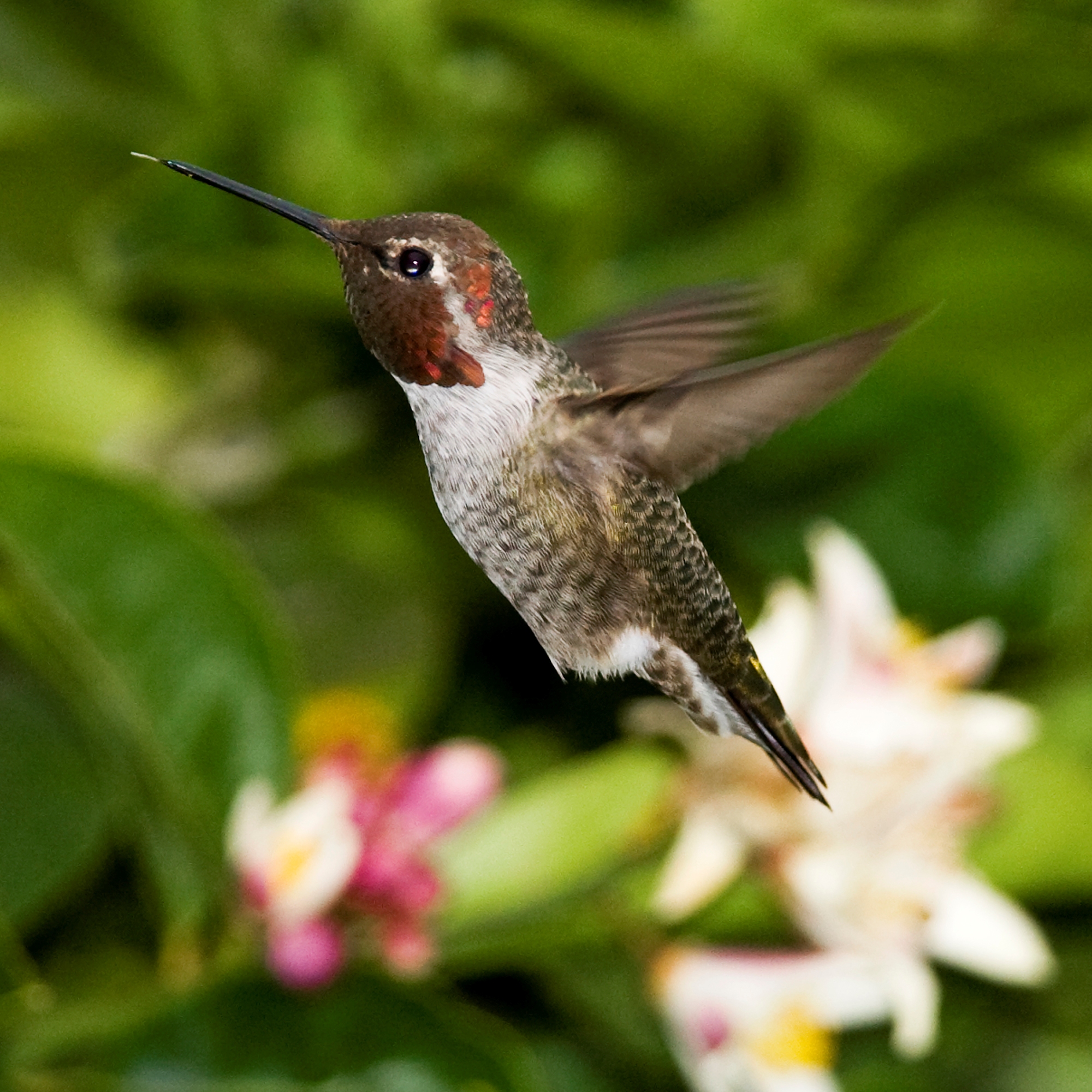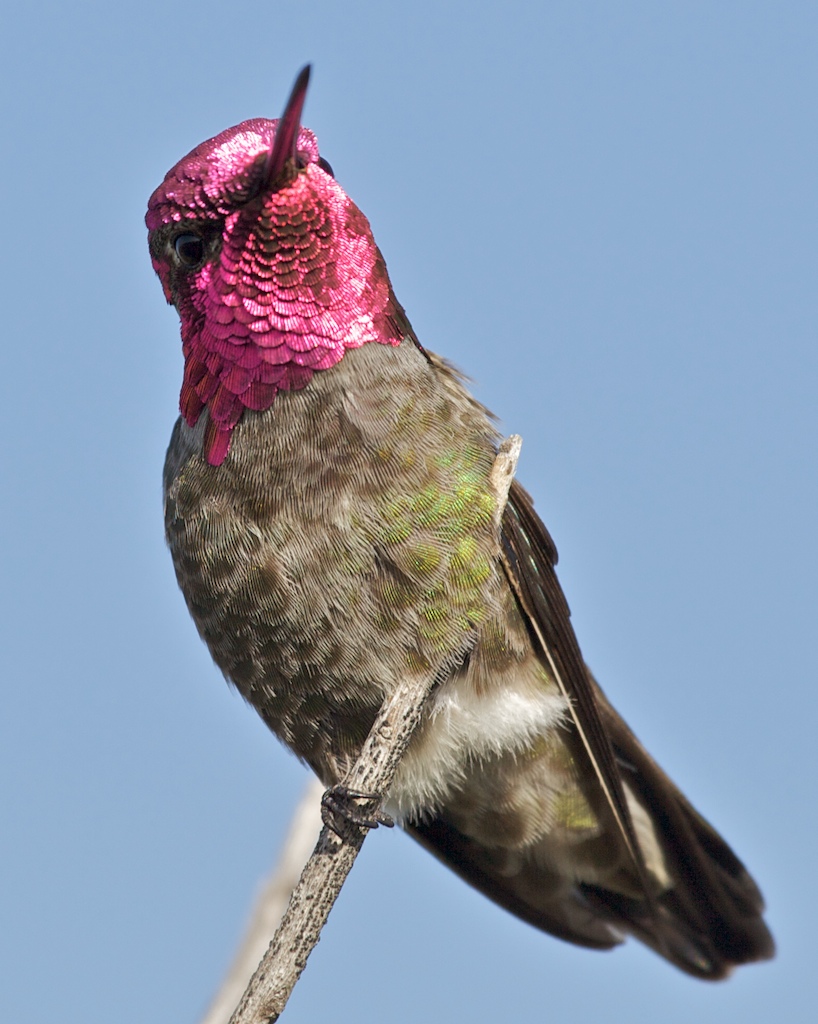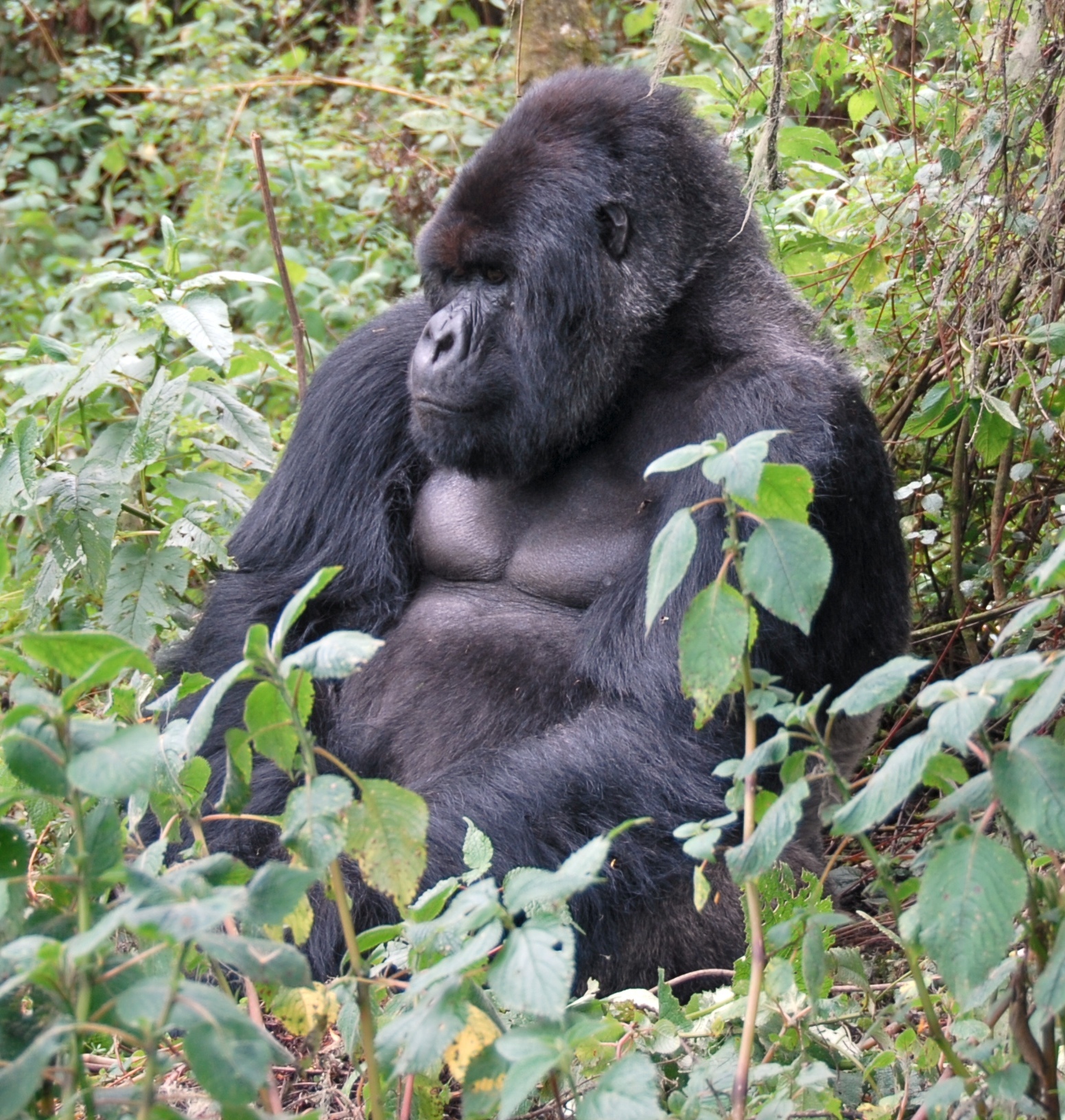|
Sonation
Sonation is the sound produced by birds, using mechanisms other than the syrinx. The term ''sonate'' is described as the deliberate production of sounds, not from the throat, but rather from structures such as the bill, wings, tail, feet and body feathers, or by the use of tools. Examples are the tonal sound produced by the tail-feathers of the Anna's hummingbird ''Calypte anna'', the drumming of the tail-feathers of the African snipe and common snipe, bill-clattering by storks or the deliberate territorial tapping practised by woodpeckers and certain members of the parrot family, such as palm cockatoos which drum on hollow trees using broken-off sticks. The clapper lark's (''Mirafra apiata'') display flight includes a steep climb with wing rattling. Barn owls produce a clicking snap to show annoyance or fear. Bustards, floricans and korhaans of the Otididae include foot-stamping in their mating displays. Studies have revealed at least four sonations employed by two manakin gen ... [...More Info...] [...Related Items...] OR: [Wikipedia] [Google] [Baidu] |
Calypte Anna
Anna's hummingbird (''Calypte anna'') is a medium-sized bird species of the family Trochilidae. It was named after Anna Masséna, Duchess of Rivoli. It is native to western coastal regions of North America. In the early 20th century, Anna's hummingbirds bred only in northern Baja California and southern California. The transplanting of exotic ornamental plants in residential areas throughout the Pacific coast and inland deserts provided expanded nectar and nesting sites, allowing the species to expand its breeding range. Year-round residence of Anna's hummingbirds in the Pacific Northwest is an example of ecological release dependent on acclimation to colder winter temperatures, introduced plants, and human provision of nectar feeders during winter. These birds feed on nectar from flowers using a long extendable tongue. They also consume small insects and other arthropods caught in flight or gleaned from vegetation. Taxonomy Anna's hummingbird was formally described and illu ... [...More Info...] [...Related Items...] OR: [Wikipedia] [Google] [Baidu] |
Drumming (snipe)
Drumming (also called bleating or winnowing) is a sound produced by snipe as part of their courtship display flights.Van Casteren, A, et al. “Sonation in the Male Common Snipe (Capella Gallinago Gallinago L.) Is Achieved by a Flag-like Fluttering of Their Tail Feathers and Consequent Vortex Shedding.” ''The Journal of Experimental Biology'', vol. 213, no. 9, 2010, pp. 1602–1608. The sound is produced mechanically (rather than vocally) by the vibration of the outer tail feathers when flying in a downwards, swooping motion. The drumming display is usually crepuscular, though it can also be heard at any point throughout the breeding season, as well as sporadically during their migration period. Drumming is commonly heard within the context of a mating display, but it can also be displayed as means of distraction when conspecific intruders or potential predators are in the area — this can benefit male snipe in attracting a female mate. The weather can also have an impact on the ... [...More Info...] [...Related Items...] OR: [Wikipedia] [Google] [Baidu] |
Machaeropterus Deliciosus
The club-winged manakin (''Machaeropterus deliciosus'') is a small passerine bird which is a resident breeding species in the cloud forest on the western slopes of the Andes Mountains of Colombia and northwestern Ecuador. The manakins are a family (Pipridae) of small bird species of subtropical and tropical Central and South America. Sound-making mechanism Like several other manakins, the club-winged manakin produces a mechanical sound with its extremely modified secondary remiges, an effect known as sonation. The manakins adapted their wings in this odd way as a result of sexual selection. In manakins, the males have evolved adaptations to suit the females' attraction towards sound. Wing sounds in various manakin lineages have evolved independently. Some species pop like a firecracker, and there are a couple that make whooshing noises in flight. The club-winged manakin has the unique ability to produce musical sounds with its wings. Each wing of the club-winged manakin has o ... [...More Info...] [...Related Items...] OR: [Wikipedia] [Google] [Baidu] |
Anna's Hummingbird - Male Flying
{{disambig ...
Anna's may refer to: * Anna's hummingbird (''Calypte anna'') * Anna's Linens, a US retailer of household linens and other home goods *Anna's Swedish Thins, a Swedish gingerbread thin *Anna's Taqueria, a fast-food chain in the Boston area *Anna's Swedish Thins, a brand of cookie manufactured by Lotus Bakeries Lotus Bakeries is a Belgian biscuit company, founded in 1932, with its headquarters in Lembeke, Kaprijke, Belgium. Lotus is known for its speculoos biscuits and biscuit-based products, branded as Lotus Biscoff in the United States, United Kingd ... [...More Info...] [...Related Items...] OR: [Wikipedia] [Google] [Baidu] |
Barn Owl
The barn owl (''Tyto alba'') is the most widely distributed species of owl in the world and one of the most widespread of all species of birds, being found almost everywhere except for the polar and desert regions, Asia north of the Himalayas, most of Indonesia, and some Pacific Islands. It is also known as the common barn owl, to distinguish it from the other species in its family, Tytonidae, which forms one of the two main lineages of living owls, the other being the typical owls (''Strigidae''). There are at least three major lineages of barn owl: the western barn owl of Europe, western Asia, and Africa; the eastern barn owl of southeastern Asia and Australasia; and the American barn owl of the Americas. Some taxonomic authorities classify barn owls differently, recognising up to five separate species; and further research needs to be done to resolve the disparate taxonomies. There is considerable variation of size and colour among the approximately 28 subspecies, but most ... [...More Info...] [...Related Items...] OR: [Wikipedia] [Google] [Baidu] |
Stridulation
Stridulation is the act of producing sound by rubbing together certain body parts. This behavior is mostly associated with insects, but other animals are known to do this as well, such as a number of species of fish, snakes and spiders. The mechanism is typically that of one structure with a well-defined lip, ridge, or nodules (the "scraper" or ''plectrum'') being moved across a finely-ridged surface (the "file" or ''stridulitrum''—sometimes called the ''pars stridens'') or vice versa, and vibrating as it does so, like the dragging of a phonograph needle across a vinyl record. Sometimes it is the structure bearing the file which resonates to produce the sound, but in other cases it is the structure bearing the scraper, with both variants possible in related groups. Common onomatopoeic words for the sounds produced by stridulation include ''chirp'' and ''chirrup''. Arthropod stridulation Insects and other arthropods stridulate by rubbing together two parts of the body. These a ... [...More Info...] [...Related Items...] OR: [Wikipedia] [Google] [Baidu] |
Pipra
''Pipra'' is a genus of birds in the manakin family Pipridae. Taxonomy and species list The genus ''Pipra'' was introduced by the Swedish naturalist Carl Linnaeus in 1764. The name was used by Ancient Greek authors such as Aristotle for a small bird but it is unclear which species it referred to. The type species was designated as the crimson-hooded manakin in 1840 by the English zoologist George Robert Gray George Robert Gray FRS (8 July 1808 – 6 May 1872) was an English zoologist and author, and head of the ornithological section of the British Museum, now the Natural History Museum, in London for forty-one years. He was the younger brother .... The genus contains three species: References Bird genera Pipridae Taxonomy articles created by Polbot {{Pipridae-stub ... [...More Info...] [...Related Items...] OR: [Wikipedia] [Google] [Baidu] |
Manacus
''Manacus'' is a genus of passerine birds in the manakin family which are found in the forests of tropical mainland Central and South America, and on Trinidad and Tobago. The genus ''Manacus'' was introduced by the French zoologist Mathurin Jacques Brisson in 1760 with the white-bearded manakin (''Manacus manacus'') as the type species. The name ''manacus'' is from the Dutch ''manneken'' "pretty little thing". The genus contains four species: The "Almirante manakin" (''Manacus'' x ''cerritus'') are stereotyped hybrids between the white-collared and the golden-collared species, found in Bocas del Toro Province, Panama (Brumfield ''et al.'', 2001; McDonald ''et al.'', 2001). These are small, compact, short-tailed birds with a heavy hooked bill and orange legs. The males have brightly coloured plumage and long puffed throat feathers, whereas the females are the typical manakin dull olive hue. The females lay two eggs in a shallow cup nest in a tree. Nest-building, incubatio ... [...More Info...] [...Related Items...] OR: [Wikipedia] [Google] [Baidu] |
Otididae
Bustards, including floricans and korhaans, are large, terrestrial birds living mainly in dry grassland areas and on the steppes of the Old World. They range in length from . They make up the family Otididae (, formerly known as Otidae). Bustards are omnivorous and opportunistic, eating leaves, buds, seeds, fruit, small vertebrates, and invertebrates.del Hoyo, J. Elliott, A. & Sargatal, J. (editors). (1996) ''Handbook of the Birds of the World. Volume 3: Hoatzin to Auks''. Lynx Edicions. There are 26 species currently recognised. Description Bustards are all fairly large with the two largest species, the kori bustard (''Ardeotis kori'') and the great bustard (''Otis tarda''), being frequently cited as the world's heaviest flying birds. In both the largest species, large males exceed a weight of , weigh around on average and can attain a total length of . The smallest species is the little brown bustard (''Eupodotis humilis''), which is around long and weighs around on average. ... [...More Info...] [...Related Items...] OR: [Wikipedia] [Google] [Baidu] |
Mirafra Apiata
The Cape clapper lark (''Mirafra apiata'') is a small passerine bird which breeds in southern Africa. It derives its name from the wing clapping which forms part of the display flight. The Cape clapper lark is a species of open grassland and savannah, also inhabiting karoo, fynbos and fallow agricultural land. Taxonomy and systematics The Cape clapper lark was originally placed in the genus '' Alauda''. This species and the Eastern clapper lark were formerly considered conspecific as the clapper lark (M. apiata) until split in 2009. The Cape clapper lark and the Eastern clapper lark are regarded as forming a superspecies with the flappet lark, which is found further to the north. Bar-tailed lark is another alternate name for the Cape clapper lark. Subspecies Two subspecies are recognized: * ''M. a. apiata'' - (Vieillot, 1816): Found in south-western Namibia and western South Africa * Agulhas clapper lark (''M. a. marjoriae'') - Winterbottom, 1956: Found in southern Wester ... [...More Info...] [...Related Items...] OR: [Wikipedia] [Google] [Baidu] |
Display Behavior
Display behaviour is a set of ritualized behaviours that enable an animal to communicate to other animals (typically of the same species) about specific stimuli. These ritualized behaviours can be visual however many animals depend on a mixture of visual, audio, tactical and/or chemical signals as well. Evolution has tailored these stereotyped behaviours to allow animals to communicate both conspecifically and interspecifically which allows for a broader connection in different niches in an ecosystem. It is connected to sexual selection and survival of the species in various ways. Typically, display behaviour is used for courtship between two animals and to signal to the female that a viable male is ready to mate. In other instances, species may exhibit territorial display behaviour, in order to preserve a foraging or hunting territory for its family or group. A third form is exhibited by tournament species in which males will fight in order to gain the 'right' to breed. Animals ... [...More Info...] [...Related Items...] OR: [Wikipedia] [Google] [Baidu] |
Trochilus Polytmus
The red-billed streamertail (''Trochilus polytmus''), also known as the doctor bird, scissor-tail or scissors tail hummingbird, is a species of hummingbird in the "emeralds", tribe Trochilini of subfamily Trochilinae. It is endemic to Jamaica and is the national bird of the country.HBW and BirdLife International (2021) Handbook of the Birds of the World and BirdLife International digital checklist of the birds of the world. Version 6. Available at: http://datazone.birdlife.org/userfiles/file/Species/Taxonomy/HBW-BirdLife_Checklist_v6_Dec21.zip retrieved August 7, 2022 Taxonomy and systematics The red-billed streamertail was formally described by the Swedish naturalist Carl Linnaeus in 1758 in the tenth edition of his ''Systema Naturae'' under the binomial name ''Trochilus polytmus''. Linnaeus quoted the description in Latin by the Irish physician Patrick Browne in his ''The Civil and Natural History of Jamaica'' which had been published two years earlier in 1756. The specif ... [...More Info...] [...Related Items...] OR: [Wikipedia] [Google] [Baidu] |





.jpg)
